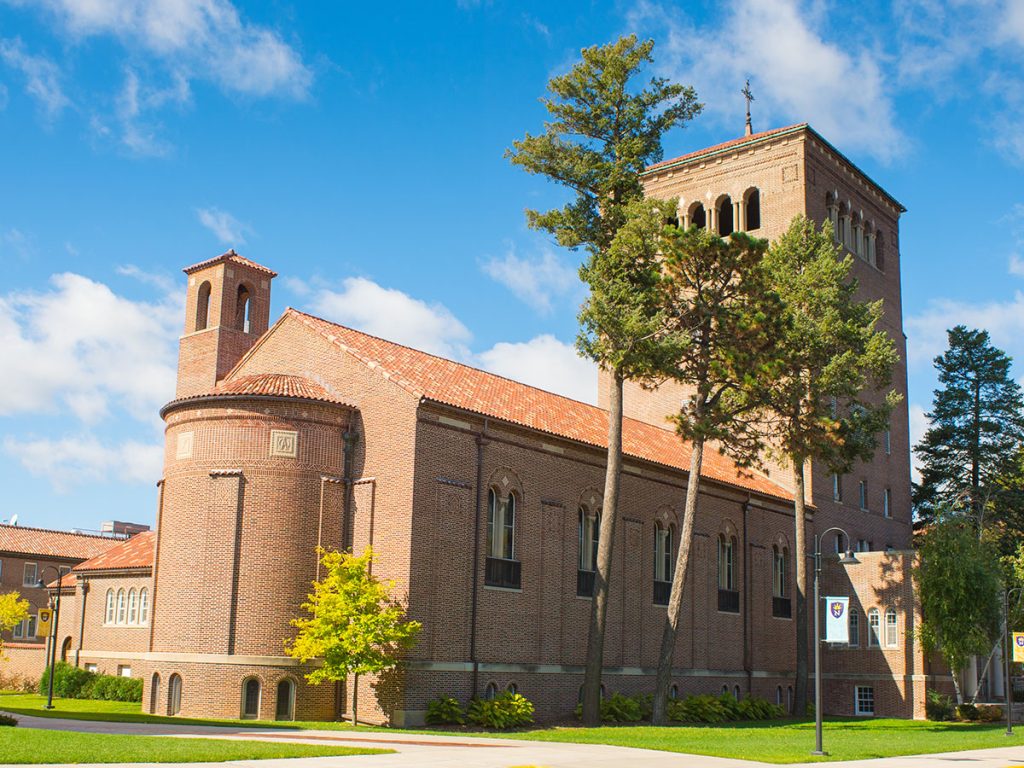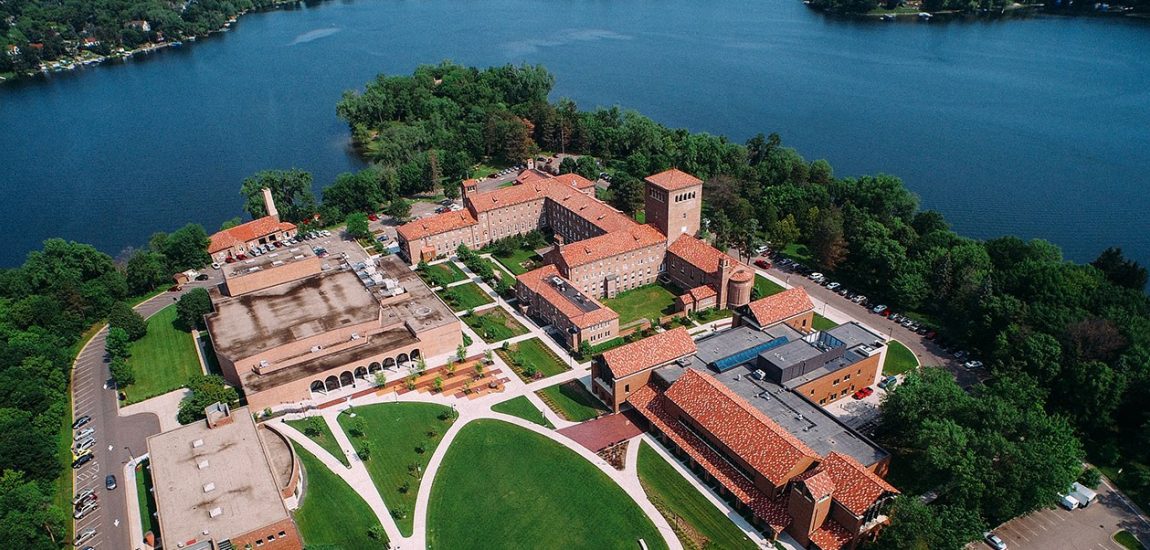What’s old is new again. And in the words of English writer and philosopher John Ruskin:
“Drawing may be taught by tutors; but design only by heaven.”
Nazareth Hall, home to many Northwestern chapel services, weddings, classes, and music recitals over decades of years, is a veritable jewel of architecture and a place of dazzling 1920s Romanesque-Byzantine beauty. From the immense expanse of its massive, 105-foot entrance tower to the arched inner vault of its foyer, there is rich symbolism and didactic meaning in the building that has been a recognizable pillar to Northwestern students since 1972.
2022 marked Nazareth Hall’s centennial. The building and its beauty carry a certain amount of nostalgia for those who have spent time on Northwestern’s campus as a student, parent, friend, or visitor. Its history and original purpose, though, are not as widely known. Much of what a Catholic bishop envisioned in the 19th century—well beyond the physical structure—remains intact today as thousands walk through Nazareth each year.
Nazareth was originally constructed as the minor seminary of the Archdiocese of St. Paul. The archdiocese occupied the building and surrounding campus for 47 years until its closure in 1970, a casualty of the 1960s, a time when a flood of minor seminaries were shuttered amid a massive cultural shift in favor of change and modernity. Later that year, Northwestern purchased the suburban St. Paul property from the archdiocese for $2.175 million.
Despite its age, the European-looking structure stands strong today, 50 years after Northwestern acquired the space after its Minneapolis beginnings. The building has been described as frozen poetry—a rhyme in every line, grace, and beauty, and meaning in every part of its stately structure. Both inside and outside Nazareth Hall, art and architecture reach beyond the surface of the senses and touch the depths of the human soul.
Rev. Thomas Grace, the first Catholic bishop of St. Paul, purchased the suburban sylvan land where Nazareth Hall stands in 1866. For the price of $800—approximately $19 per acre—Grace, on behalf of the archdiocese, was able to purchase 42 wooded acres abutting scenic Lake Johanna. In 1915, his successor purchased an additional adjoining 47 acres for $3,525, making a total of 89 wooded lakeshore acres on the pristine shores of a picturesque recreational lake. Several decades later, Nazareth Hall Preparatory Seminary was built by Archbishop Austin Dowling, a pioneer evangelist who also envisioned the nearby Cathedral of St. Paul.
With a strong commitment to education and having previously served as a ministerial professor, Dowling initiated construction of a seminary built on a lake in the wilds of nature, where students could be formed in the school of virtue in the invigorating world of imagination and the great outdoors, giving deep insight into his advanced psychology of education. There students could connect with nature, an effective teacher, with every wild bird and wavelet on the lakeshore speaking of the glory of God and the beauty of creation. Despite a transition in ownership five decades after Nazareth Hall’s opening, the space for teaching, learning, and worship has remains a vital part of the Northwestern experience.
Excerpt from the Northwestern Pilot.

